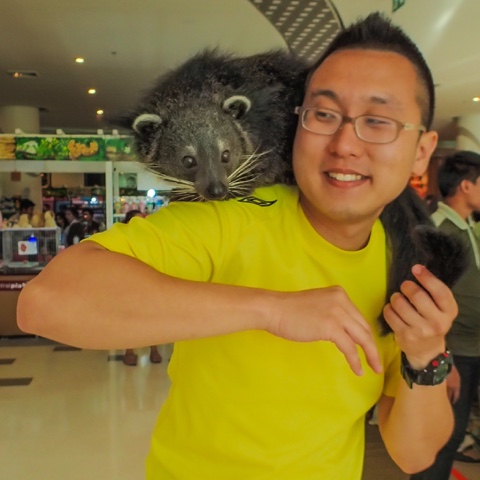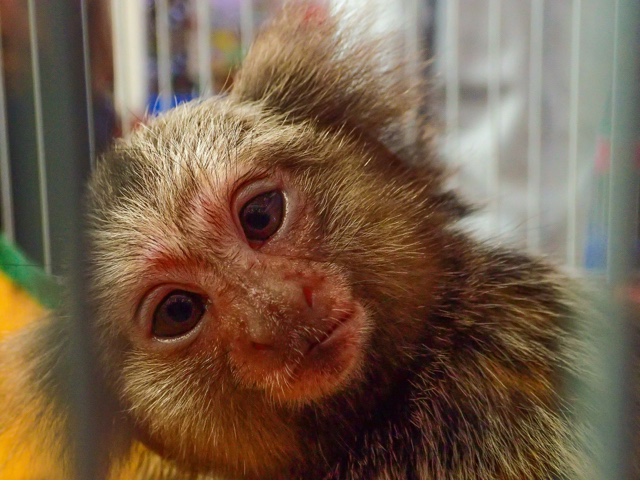Below: Krungthepmahanakhon Amonrattanakosin Mahintharayutthaya Mahadilokphop Noppharatratchathaniburirom Udomratchaniwetmahasathan Amonphimanawatansathit Sakkathattiyawitsanukamprasit.
Her strategic decision-making this time was vindicated. The Berkeley Hotel, Pratunam, adjoined a mall, with one of Bangkok's main shopping district a mere five minutes away on foot. Many of our compatriots went through the same decision-making process to end up there. There were times when we felt like we never left Singapore - except when we were crossing the road.
Below: Elbow room on the road - there wasn't much of it as vehicles spent a lot of time stationary bumper to bumper.
As was to be expected, much of our first day (in fact, of our entire Bangkok stint) was spent in that airconditioned belt between Central World and Siam Discovery. Occasional forays took us to A&W, long since wound up on our shores, but we never strayed far from the aforementioned stretch of malls. It wasn't the first time we ended up with most of our time in a city indoors. Nearly four years ago, we hardly stepped outside the Green Belt and assorted SM Malls on our trip to Manila in the Philippines.
Below: What Bangkok was for us - a view of Centralworld from Kinokuniya at Siam Paragon.
So Up There: Park Society, Sofitel
What I did differently this time, however, was to arrange dinner at a posh restaurant. (I don't often do this, because I never quite grasped the strange arithmetic of fine dining - basically how presentation is made to compensate for paltry portions.) Dinner at Park Society, Sofitel, was meant to celebrate our five years since the day I asked Mary to be my sunshine, on a wintry summer's evening in Berlin. The restaurant looked north over Lumphini Park to the Pratunam skyline, and was one of the many top-floor eating establishments for which Bangkok is known. It was also indoors, because I expected rain (rained it eventually did).
Below (top to bottom): So Good, the views from Sofitel Park Society, of glacial traffic that inches by day and glows by night; and of bright lights in a city that hardly seems to sleep.
The witty people in the Sofitel branding department had decided to take a pun on the hotel's name. The result was So and So, the adverb attached as prefixes to form catchphrases for nearly every service provided by the hotel. Park Society was dimly lit, and not too crowded on a Friday evening. Service was excellent - we were served by this young French chap from Strasbourg, who was surprised I've even heard of his city. He didn't know it was because I played Championship Manager many seasons ago.
Below: Before the main courses were served. Mary liked the food. I liked that she liked her food.
Chatuchak Weekend Market
The following day was a Saturday, and so we took a day trip to Chatuchak Weekend Market. Chatuchak was a window to another world. People flock there for the often knockdown prices and the range of products on offer - from food (cooked, uncooked, hot, cold), to flowers (artificial, real and miniatures), to fashion (of various shapes and sizes), to all manners of utensils, to home decor and furniture (of different makes and material), to even pets (with rights to photograph the animals peddled too). The market could have very well been a country unto itself. It lacked nothing - except perhaps aircondition, walking space and general navigability. We tottered out of the market blinking and bleary-eyed when glut became tedium, and when all the alleys and display shelves looked the same.
Above (top to bottom): People Parade in Chatuchak Weekend Market; Banana Brigade out in force.
Bottom (top to bottom): ceramic receptacles, miniature artificial flowers and straw roosters, just some of the stacks and stacks of unthinkably interesting items on sale in Chatuchak, through tactics of similar creativity.
Krungthepmahanakhon Amonrattanakosin Mahintharayutthaya Mahadilokphop Noppharatratchathaniburirom Udomratchaniwetmahasathan Amonphimanawatansathit Sakkathattiyawitsanukamprasit is the Thai capital's full name. City of angels, great city of immortals, magnificent city of the nine gems, seat of the king, city of royal palaces, home of gods incarnate, erected by Vishvakarman at Indra's behest. But Thais know the city as Krung Thep, City of Angels. That these names have been both forgotten and drastically abbreviated represents just how many modern experiences within the city are bereft of any historicity. It was the same for us. We were drawn here to shop, and to eat, and to feel good doing nothing else but the above. At the same time, it seemed like all things in the city yielded some margin of profit. Many taxi-drivers tried to charge us higher flat fares. Firm insistence got us on the taxi meter. It also got us sullen silence the rest of the way.
On our last evening in the city, upon entering the departure hall in Suvarnabhumi Airport, we were greeted by gilded statues of demons and demigods churning the milk ocean with the sinuous torso of a giant naga (pictured above). For a time, these set aside their differences for a chance to obtain the elixir of immortality which the toil would reward them with. Mortal folks today have not stopped seeking after the same prize.
For some, eternal life is a leather bag with an Italian label.




































